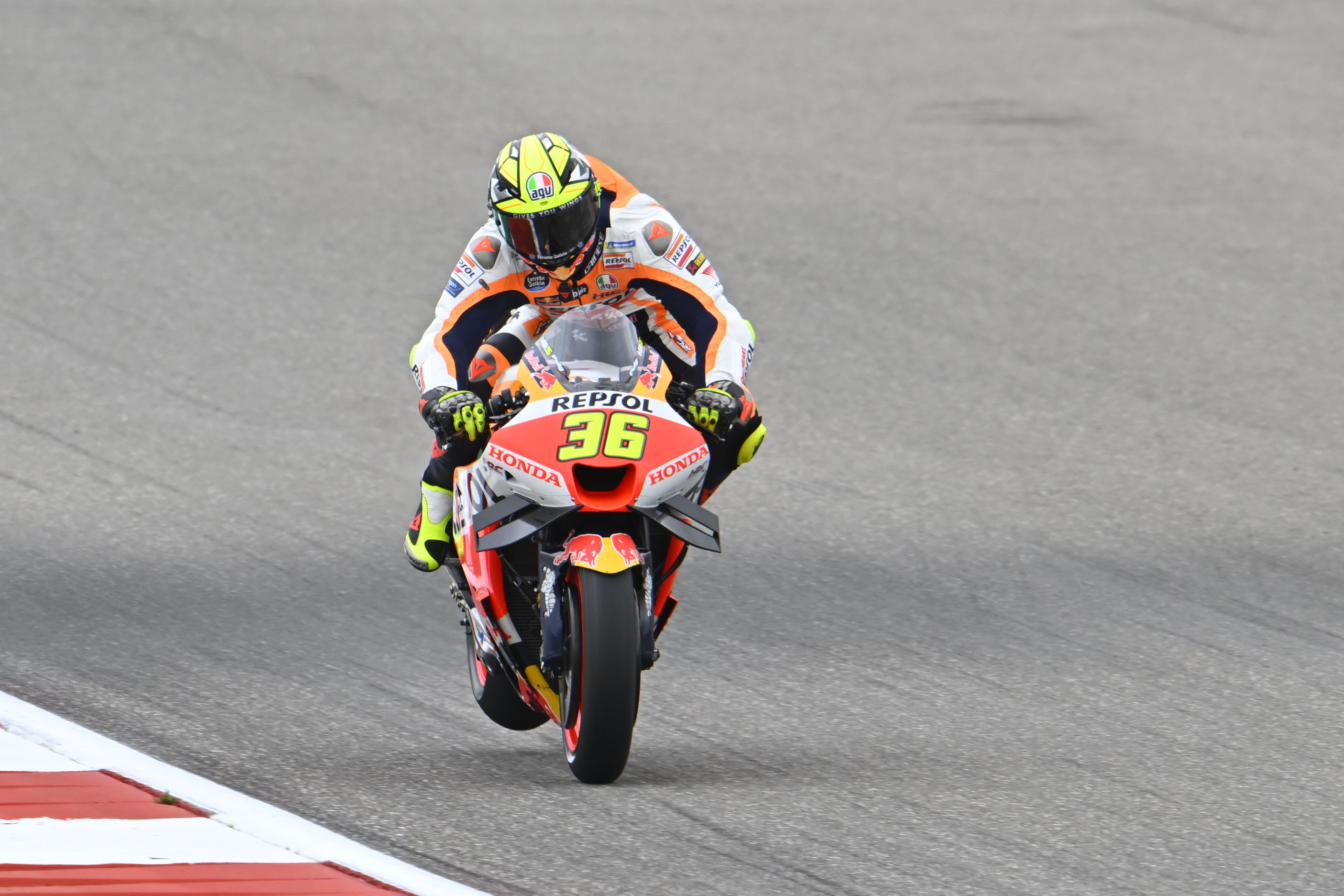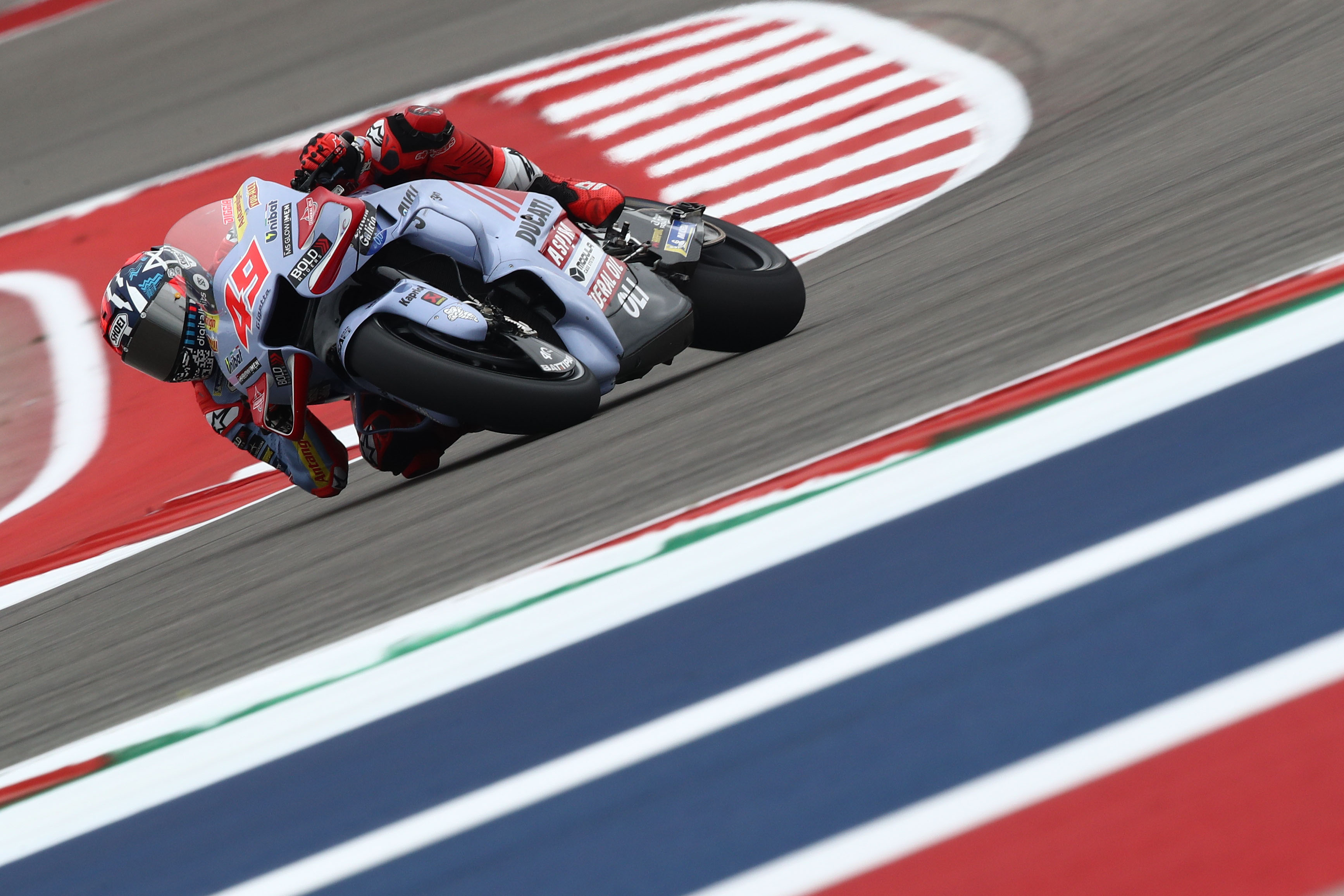MotoGP’s new sprint races have been a source of both opportunity and stress for the riders on the grid – but, from the very start, many of them have emphasised that the changes made to the weekend to accommodate the sprint would prove as impactful as the extra race itself.
The knock-on effect on Friday in particular has been a very noticeable one, with FP1 and FP2 now determining 10 of the 12 spots in the final qualifying segment – instead of FP1, FP2 and FP3 like before.
This has led to RNF Aprilia’s Raul Fernandez claiming at COTA that Friday was now “90%” of the weekend’s result – and, accounting for the hyperbole, that is clearly a widely-shared view.
But, apart from adding extra stress to Friday as a whole, it means that even FP1 by itself is now considerably less likely to be pressure-free in terms of the result.
“It’s a lot more intense, a lot more intense in all the ways,” said Honda’s Joan Mir. “I’m not sure if I enjoy it more, with this schedule.
“But it is what it is.
“It made more sense to first try this thing, wait for the opinion of everyone, and then make it forever.
“Before you had FP1 more or less to put it all together, free for you. Then FP2, to try for the first time something. And then all the rest.”
FP1 is already seen as a session of potentially limited use – at least in terms of figuring out the mechanical set-up and electronics – due to the ‘track cleaning’ aspect of it.

At Austin in particular, riders were generally not at liberty to forgo a late-FP1 time attack on fresh tyres – albeit some chose the medium rear instead of the soft rear – because of ever-present threat of rain.
Had it picked up more than it did in the aftermath of the session, FP2 would’ve provided no opportunity for improvement, so the combined classification top 10 would’ve been locked in.
FP2 has been extended by 15 minutes compared to last year, so it generally translates to four runs instead of three, albeit with two of those runs virtually always being late-session soft-tyre time attacks, effectively ‘Q0’.
Combined with the late-FP1 time attack, it makes for a total of three Friday runs without obvious laptime pressure.
Asked whether this would logically be tough on rookies in particular, Mir said: “Yeah, poor Augusto [Fernandez, MotoGP’s sole rookie this year]!”
Rookie Fernandez has relatively thrived, but the Friday format seems to have contributed to the struggles of some of those more experienced riders behind him in the standings – like Mir, still adapting to the Honda and finding that he’s starting weekends with a set-up that just isn’t right, or Gresini Ducati sophomore Fabio Di Giannantonio.

“For sure the schedule doesn’t help because at the end you cannot try anything,” said Di Giannantonio.
“Because FP1 is already qualifying. FP2 is even worse, more than qualifying! You try something in FP3 [the Saturday morning session] but at the end it’s a bit late, because even if you find something [new] you have to fight in Q1 to be in Q2.
“I would love to have a ‘free’ FP1, long, just to try [things]. And I think it’s a way of thinking of every rider!
“But the schedule is like this, so you have to adapt, you have to take the maximum from it.”
The idea would therefore seem to be to have FP2 and only FP2 determine the 10 Q2 places.
This would already formalise an existing state of things – at COTA, 13 riders went faster in FP2 than in FP1, making the ‘combined classification’ aspect irrelevant, and that’s a common trend when weekends aren’t disrupted by inclement weather.
At the same time, it would rob FP1 of the extra selling point of having it potentially count, and dissuade those late-session ‘insurance’ runs that create entertainment value.
Perhaps because of this Di Giannantonio seemed to run out of vigour in pushing for the change in his very next answer.
“For sure it’s a thing that we can discuss and talk about. But it’s just a ‘maybe’…
“It’s bulls***. We have to follow what it is [currently] and just work.”






